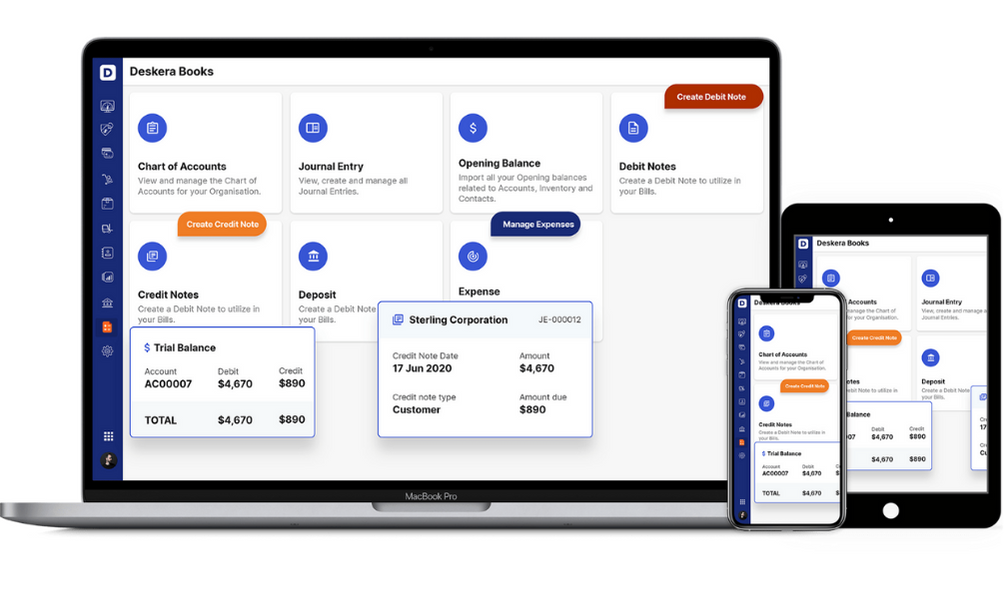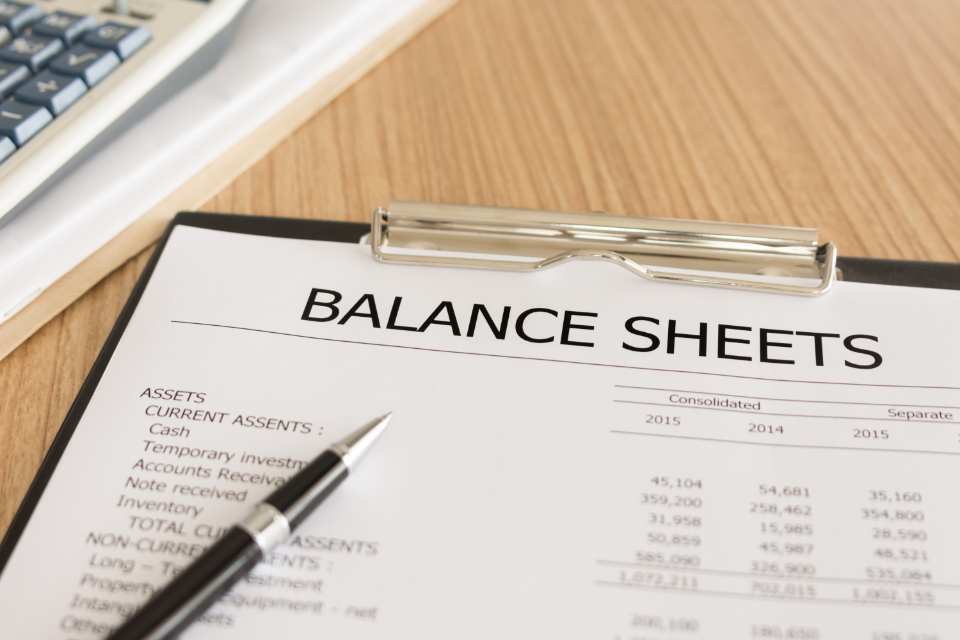Jeffery is a businessman who deals in computers and is doing well in his venture. He thinks of expansion but is skeptical about entering into a new side of his ongoing profitable business. He has questions like ‘what if he buys a new line of business' or 'what if he loses an account' or 'what if his tax liabilities increase.' Such "What if" questions make it imperative for Jeffery and other businesses to make pro forma financial statements that provide the opportunity to run a variety of virtual scenarios and understand their potential effect on organizations.
The term "proforma" is a Latin word that means "according to form". So, what are pro forma financial statements? Let us understand here.
Table of Contents
- Why create pro forma financial statements?
- Benefits of creating pro forma financial statements
- Pro Forma Financial Statements Vs. Budget
- Types of pro forma financial statements
- How to create pro forma financial statements
- How do you create pro forma financial statements - balance sheet?
- To Create Pro Forma Financial Statements - Balance Sheet
- To Create Pro Forma Financial Statements – Income Statement
- To Create Pro Forma Financial Statements – Cash Flow Statement
- Creating a Pro Forma Financial Statements - balance sheet
- Conclusion
- How can Deskera Help You?
- Key Takeaways
The definition and meaning of pro forma financial statements
According to Merriam-Webster, “pro forma” means something that is created or executed superficially or formally or a statement that is based on financial assumptions or forecasts. From an accounting perspective, pro forma financial statements are revenue and cost reports of a business based on an assumption or a fictitious scenario. These are ways to test what might happen in the future to help you make business decisions. There are three important pro forma financial statements:
- Proforma Income Statement
- Proforma balance sheet
- Proforma cash flow statement
Estimated financial statements are prepared by the company based on assumptions regarding historical events or occurrences that may take place in the future. These statements help in making budgets and provide outsiders with an overview of the company's results because they present the organization's forecasts for future periods based on specific assumptions. Pro forma financial statements are established on what-ifs rather than actual financial results.
The pro forma financial statements correspond to potential outcomes and are not considered to follow GAAP (generally accepted accounting principles). They don’t have to meet the formal accounting standards, and cannot be used for tax returns, etc. You could invite a penalty by the Securities and Exchange Commission if you use a proforma statement that is not so specified to falsely convey your company to investors.
However, pro forma financial statements help you create business plans, make financial forecasts, and get money from potential investors and lenders.
Why create pro forma financial statements?
- Creating proforma statements can help businesses:
- Raise funds by showing investors how businesses plan to spend their funds to potentially scale and grow their business
- These statements help businesses to take a closer look at all kinds of likely scenarios to plan for the future
- The pro forma financial statements help to predict changes that may impact your growing business
- Large companies use pro forma financial statements for forecasting and financial shaping of varied scenarios
Benefits of creating pro forma financial statements
1. Testing Technique
These are very useful business planning tools as they can be compared side by side based on various financial forecasts that will help you decide between two possible strategies. This is a form of A / B testing for strategic business management and planning.
2. Predict the influence of financial decisions
You can use pro forma financial statements to predict the impact of financial decisions; for example, if you are considering refinancing your debt, or if your business is trying to set a new tax rate, you can use the pro forma financial statements to determine the impact of your decision on your business and plan for the future.
3. Raising funds
If you're looking for an investment, you can provide lenders and investors with pro forma financial statements that can show them how you plan to scale your business. Pro forma financial statements are often a prerequisite for investment.
4. Historical efficiency
Pro forma financial statements provide insights into the company's historical health and focus on the company's future. You can create these statements for risk analysis, investment forecasting, and viewing expected results before the end of the financial period.
5. Management Decisions
Pro forma financial statements help in decision-making and strategic planning. These statements allow you to directly compare the possible results to determine which is better and guide you through the planning process.
Pro Forma Financial Statements Vs. Budget
Both pro forma financial statements and budgets are an anticipation of the future and can decide you intend to spend your money. However, budgets and proforma statements are two different financial tools. Pro forma financial statements are forecasts and budgets are planned. Budgets are formulated based on pro forma financial statements to plan based on expectations.
For Example:
Jeffrey’s current year's income is $20,000. He prepares his pro forma financial statements that predict the income to rise to $35000 next year. So, when you budget for next year, you can take that extra $15,000 into account. You'll probably spend the extra predicted earnings to repay a loan principal or simply add to your savings.
Types of pro forma financial statements
There are four main types of pro forma financial statements depending on the purpose of your financial forecast.
1. Year-round proforma guidance
Pro forma financial statements forecast captures all year-to-date financial data and then adds forecast results for the rest of the year. This allows investors and partners to see the financial status of the company at the end of the fiscal year.
2. Pro forma financial statements for financing or investment
Perhaps you are courting an investor or trying to convince your business partner of the value of your investment or additional funding. In this case, you can create a case using external cash injections that shows how this affects your company's financial position.
3. Pro forma financial statements based on business History
This type of forecast looks at the company's historical financial statements or the financial status of a merger in the past. This scenario can be used as a possible future model if you buy another company and rebuild it now.
4. Prediction for Risk Analysis
Considering the best and worst scenarios, pro forma financial statements will help you make face challenges in the future. For example, you can better equip your business to deal with inflation or rise in prices, for checking your affordability to expand or purchase new equipment and experiment with different results.
How to create pro forma financial statements
1. Pro forma financial statements – Balance Sheets
Pro forma financial statements – balance sheets are formulated based on the outlining of the future financial position of the business after the proposed transaction occurs.
2. Pro forma financial statements – Income Statement
Proforma revenue, often found in the form of a proforma income statement, represents start-up revenue in a tuned format, excluding certain costs. As a result, the proforma income statement shows what a start-up’s revenue would look like if certain inflows were excluded.
3. Pro forma financial statements - Cash Flow Statement
A cash flow proforma statement is a practice in which a voluntary statement regarding cash is reported to present a financial forecast. This is considered an estimate of the expected cash flow at a particular point in the future.
How do you create pro forma financial statements - balance sheet?
Balance sheets systematically organize your financial forecasts in a tabular format to help start-ups manage their assets better and achieve better future results. This minimizes the various types of surprises.
To Create Pro Forma Financial Statements - Balance Sheet
Step 1 – Identify the Current Assets
The pro forma financial statements - balance sheet must contain current assets like accounts receivable and cash and then cover income that is within the scope of this financial statement. The claimed rationale should include the current income and the general schedule that follows the bill payment.
Step 2 – Fixed Assets
To be included in total fixed assets, the proforma balance sheet must include fixed or long-term assets. Examples of long-term assets are tangible assets such as land, cars, and buildings. Before you can calculate total (long-term) assets, you need to calculate individual assets. For example, considering that the value of land is not depreciated over time, the value of land will be the same as the original purchase price. Buildings and vehicles, on the other hand, are subject to depreciation, so you need to calculate their value. You need to subtract this from the initial purchase price to calculate the asset value.
Step 3 - Total assets
After calculating steps 1 and 2, you should be ready with the total asset value. The estimated total asset value is equal to the sum of the current and long-term asset values calculated in the previous two steps.
Step 4 - Total debt Liability
This includes expenses expected to be incurred on the Proforma balance sheet. Examples of such costs are accounts payable, wages paid, credit payments, mortgage payments, etc. Returning to the example of the proforma balance sheet, such financial statements should include the amount that the start-up should pay for the month for example the cost paid to consultants, marketing agents, team members, workers, etc. After the values of all these liabilities have been recorded, they must be added together to calculate the final value of the total liabilities.
Step 5. Tabulating the Balance sheet
Finally, wrap up all your data and subtract your total liabilities from your total assets to see if your start-up has enough assets to continue. In this case, you may need to borrow or cut costs.
To Create Pro Forma Financial Statements – Income Statement
The following steps should be followed in a proforma income statement:
- Step 1. Set a sales target for the review period – for example, if Jeffrey wants to enhance his revenue by $18,000 in a year, the same should be considered here
- Step 2. Establish a production schedule that will help you reach your goals and plan them over the period covered
- Step 3. Plan how to adjust the production schedule. To do this, increase your monthly sales by a fixed amount or gradually increase your monthly sales. It's up to you-trust your experience as an entrepreneur
- Step 4. It is the time of the "Loss" part of "Gain and Loss". Calculate the monthly cost of goods sold in the forecast. Then subtract it from your sales. It also deducts all other business costs you have
- Step 5. Create a proforma income statement using the data collected in the previous four steps. If the accounting is up to date, the proforma statement will be much more accurate. Thus, when predicting future periods, it is based on the reality of today's business
To Create Pro Forma Financial Statements – Cash Flow Statement
Create a To Create Pro Forma Financial Statements – cash flow statement, should be treated and made just like a regular cash flow statement. This means getting information from your income statement and using the form of a cash flow statement to keep track of where your money goes and what you have at hand.
Expected cash flows can give several insights. If it is negative, it means that you do not have enough cash on hand to run your business according and you may have to contact lenders or investors to out in your business. If the cash flow shows a positive figure, you can plan how to spend the surplus. You can either think of repaying an existing loan or saving by investing in the surplus.
Creating a Pro Forma Financial Statements - balance sheet
You can use the information in the income statement and cash flow statement to create proforma financial statements. However, to make this convenient, you also need your old balance sheet. This allows you to see how your company has moved from Balance Sheet A to Balance Sheet B. The balance sheet predicts changes in your business account over time. This allows you to plan where and when to move your money.
Conclusion
Pro Forma Financial Statements are an insightful way to investigate fictitious scenarios, but it's important to remember that they are based on forecasts, not facts. Therefore, it is quite possible that the predictions made by the Pro Forma Financial Statements will not be completely inaccurate and may have fallacies.
Therefore, you need to be excessively careful when valuing these types of Pro Forma Financial Statements and use them in combination with other financial statements to get a clearer picture of the company's actual financial position.
How can Deskera Help You?
Deskera Books is an online accounting, invoicing, and inventory management software that is designed to make your life easy. A one-stop solution, it caters to all your business needs, from creating invoices and tracking expenses to viewing all your financial documents whenever you need them.

Key Takeaways
- Pro Forma Financial Statements are based on developments that may occur in the future or that may have occurred in the past
- You can create full-year Pro Forma Financial Statements forecasts and investment proforma forecasts
- Pro Forma Financial Statements use existing and historical data as the basis for representing the estimated future state of the start-up after the proposed transaction occurs
- Proforma revenue, often presented in the form of a proforma income statement, represents adjusted start-up revenue, excluding certain costs
- Proforma cash flow statements are a common accounting practice in which these are reported to represent financial forecasts
- Pro Forma Financial Statements accounts have become an important tool for businesses and serve as an efficient mechanism for planning the future and predicting, managing, mitigating, and assessing the risks associated with start-up capital
Related Articles










